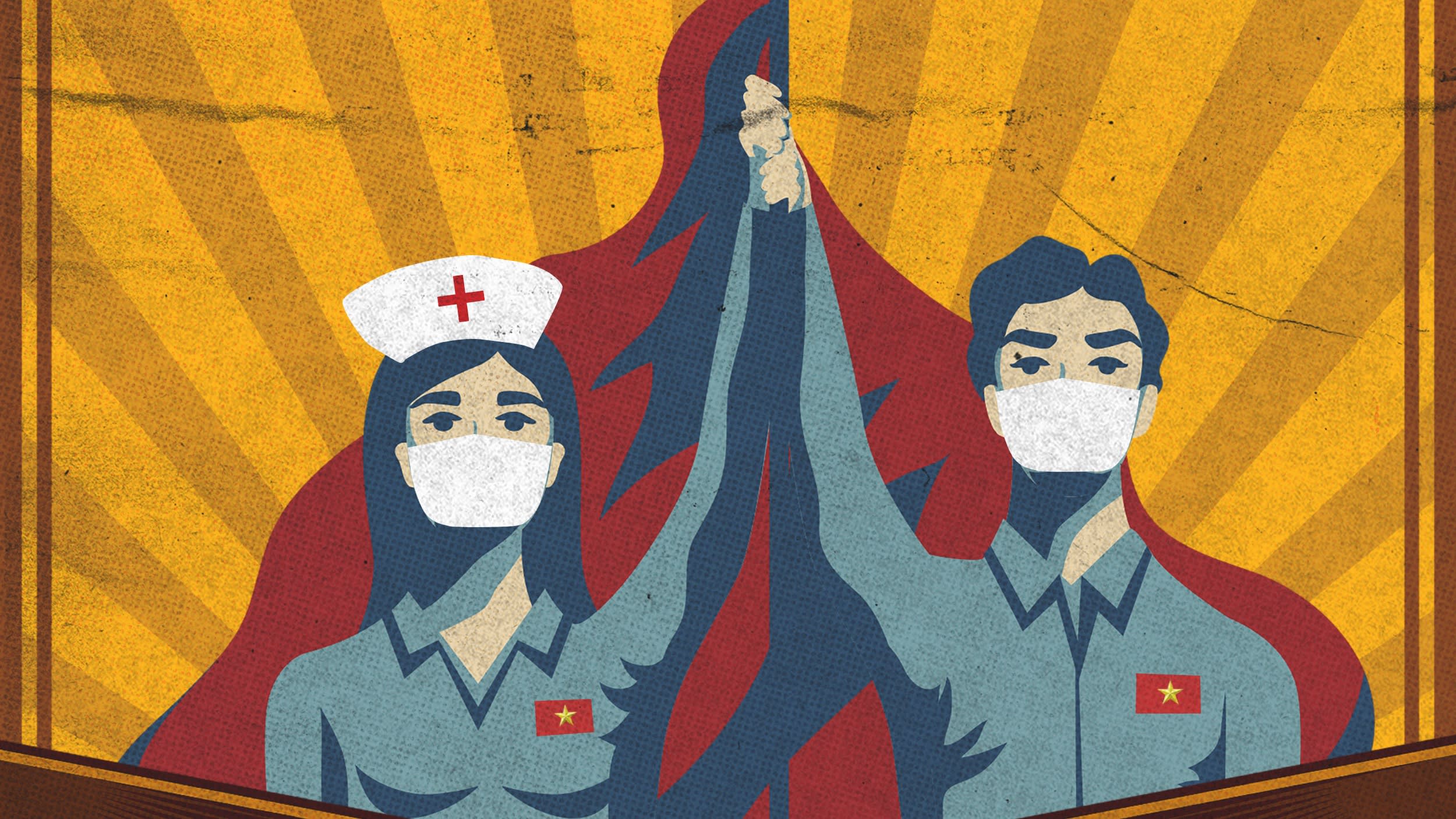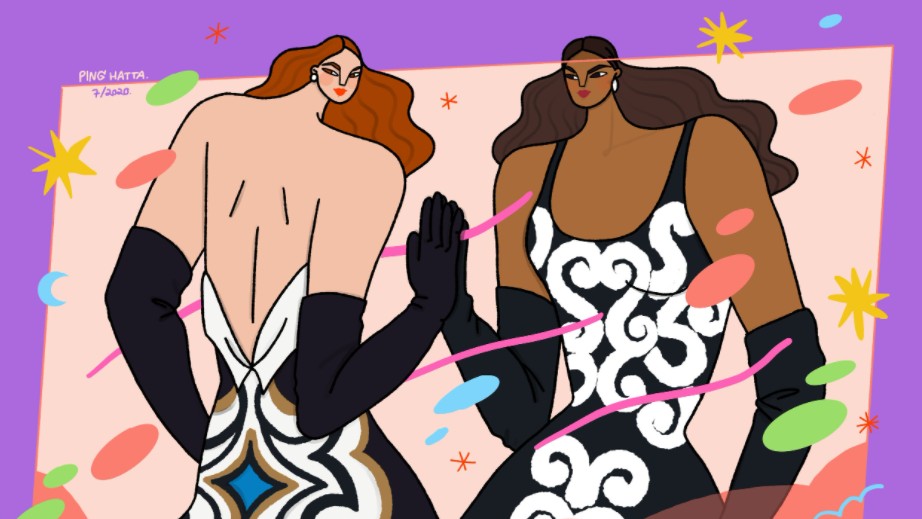Trends are tricky things to forecast. After all, back in 2019, precisely no one predicted the state the world would be in right now. So it's with a degree of trepidation that we even try to think about where illustration will be heading during 2021.
However, we believe that some trends have emerged in 2020 that are so powerful, they're very likely to continue influencing the profession over the next 12 months. Read on to find out what they are, and examples of the trend in action. And make sure you check out our list of colour trends for 2021, too.
01. Medical illustration and pandemic themes

Twelve months ago, specialising in medical or scientific illustration would have seemed a very niche career indeed. But with the pandemic being not just the biggest story of the year, but the biggest thing to happen in most people’s lifetimes, it’s a skillset that’s been in huge demand this year.
Newspapers, magazines and websites have been clamouring for engaging editorial illustrations that draw audiences in and help explain often complex concepts; from the simple, such as Andrea Ucini’s cover image for The Economist, to the more sophisticated, such as Jennifer E. Fairman’s visualisations for John Hopkins School of Medicine.
Most influential of all, of course, have been scientific and medical illustrators Alissa Eckert and Dan Higgins. They created a 3DS Max visualisation of the Coronavirus for the CDC (shown above) that helped give it a shape and form in the minds of ordinary people, and encouraged further simplification in a variety of illustrated forms.

More broadly, illustrators everywhere have been called on to help spread public health messages, as seen in the UN’s Global Call Out To Creatives at the start of the pandemic. And even when there’s been no specific request, creatives have done it anyway out of a sense of duty. Standout examples include Vietnamese artist Le Duc Hiep’s propaganda-style poster exhorting people to come together (shown above) and Studio Number One’s pro-bono posters to encourage mask wearing. With infections continuing, and several vaccines due to roll out in the coming year, we expect this trend to only heighten in 2021.
02. Renewed happiness and optimism

2020 has been nothing but doom and gloom. But with vaccine rollouts planned across the world, 2021 looks like being a more positive year all round. And so we predict that a happier and more optimistic style of illustration will be more in demand... and there are plenty of practitioners currently lighting the way.
Get the Creative Bloq Newsletter
Daily design news, reviews, how-tos and more, as picked by the editors.
The fun and colourful character art of Yuxing Li, for example, seems tailor-made for a more positive period, as do the the charming Tintin-influenced cartoons of Janne Iivonen (shown above).

Other cheery illustration work that suggest a way forward in 2021 include Adam Highton’s beautifully naiive and childlike creations (shown above); the gaudily playful stylings of Gabriel Gabriel Garble; and the bright and upbeat doodle art of Pete Clayton.
03. Abstract and painterly styles

With photography and live filming being shut down for the most of the year, illustration and animation have had to take the strain in branding, marketing and advertising campaigns. Which has meant that 2D vector graphic-style illustrations have appeared everywhere you look in 2020.
Sometimes, though, you can have too much of a good thing. So our prediction for 2021 is that brands will be looking at more distinctive and unusual styles of illustration. These will help them truly stand out in a digital environment that, in lockdown times, has become noisier and more crowded than ever.

Obviously, the trend for more unique illustration can’t, by definition, be summed up in a single piece of work. But glance at the interesting art coming from artists like Mary Herbert, whose purposely blurry pastels (shown above) are like nothing else we've seen, and you’re soon reminded how much creative boundaries can be pushed when the will is there.
We’re also huge fans of Molley May, who purposely revels in the diversity offered by the medium; the abstract and off-kilter visions of Chen Nienying; the dreamy and strange-sized imaginations of Paola Saliby; and the streetsmart, painterly stylings of Jacob Rochester.
04. Diverse stories and influences

Black Lives Matter was the second biggest story of 2020, and its cultural reverberations are likely to be felt throughout 2021 and beyond. We’re optimistic that one of its legacies will be a greater diversity of stories and influences throughout the creative industries, and not least within illustration.
We’d love to see more work like that of Birmingham-based illustrator noiamreiss, whose futuristic illustrations pay tribute to the art of braiding and Afro hair. Or that of Australian artist Shaye Gregan, who covers the same topic in a very different way in his project Don’t Touch MF.

Others worth keeping an eye on include Sonic Yonix, aka Bianca Gonzalez-Marra and Diandre Fuentes, whose work (shown above) is about “decolonising ourselves as women of colour”. Also check out Denzel Kessie aka Bllack Line, a London illustrator translating his authentic street style into work for big clients; New York-based Thai illustrator Piamrak Hattakitkosol, aka Ping Hatta, whose whimsical illustrations refuse to conform to ethnic stereotypes; and LA artist Laci Jordan, whose captivating work has been strongly influenced by #blm in 2020.
05. 2000s nostalgia

The classic Dad joke is that “nostalgia ain’t what it used to be”. But in truth, it's as regular as clockwork: every time a new decade rolls around, we all get nostalgic for the last-but-one. So in the 1970s, the world was overcome with nostalgia for the Fifties, giving rise to Grease and Happy Days. In the 1980s, the Sixties were everywhere, from Dirty Dancing to Good Morning Vietnam to The Wonder Years. So the pattern has continued, right up to the Nineties nostalgia of the 2010s. Which means we’re due a massive 2000s revival any day now.
We’re already seeing signs of this trend in the illustration world. New York-based Chinese illustrator Meiting Song, for example, fondly remembers her childhood in the early 2000s as a time filled with optimism following the new millennium and approaching the Beijing Olympics. She sets out to convey this vibe in her work, which is infused with elements of early 2000s Asian pop culture.

In a similar vein, designer Agnes Choi draws on early-2000s Hong Kong TV influences in the visuals printed on fabrics in her Limitations collection, while Robyn Nichols' fun collage-based textiles (shown above) features British throwbacks from the era which was known in the UK as The Noughties and in the US, The Aughts.
Above all, the early 2000s were dominated by the rise of digital culture, and so Netherlands based illustrator Handi Kim’s project Replika looks back at the joy of her first online internet accounts. New Jersey based digital artist Terrell Davis also celebrates computer culture of the time in his work, which is dominated by a chaotically colourful MySpace aesthetic. We’re expecting to see more of this kind of thing in 2021… a lot more.
Read more:
- The best free graphic design software
- The best Illustrator tutorials
- Download Adobe Illustrator: Try Adobe AI for free or with Creative Cloud

Thank you for reading 5 articles this month* Join now for unlimited access
Enjoy your first month for just £1 / $1 / €1
*Read 5 free articles per month without a subscription

Join now for unlimited access
Try first month for just £1 / $1 / €1

Tom May is an award-winning journalist and author specialising in design, photography and technology. His latest book, The 50th Greatest Designers, was released in June 2025. He's also author of the Amazon #1 bestseller Great TED Talks: Creativity, published by Pavilion Books, Tom was previously editor of Professional Photography magazine, associate editor at Creative Bloq, and deputy editor at net magazine.
